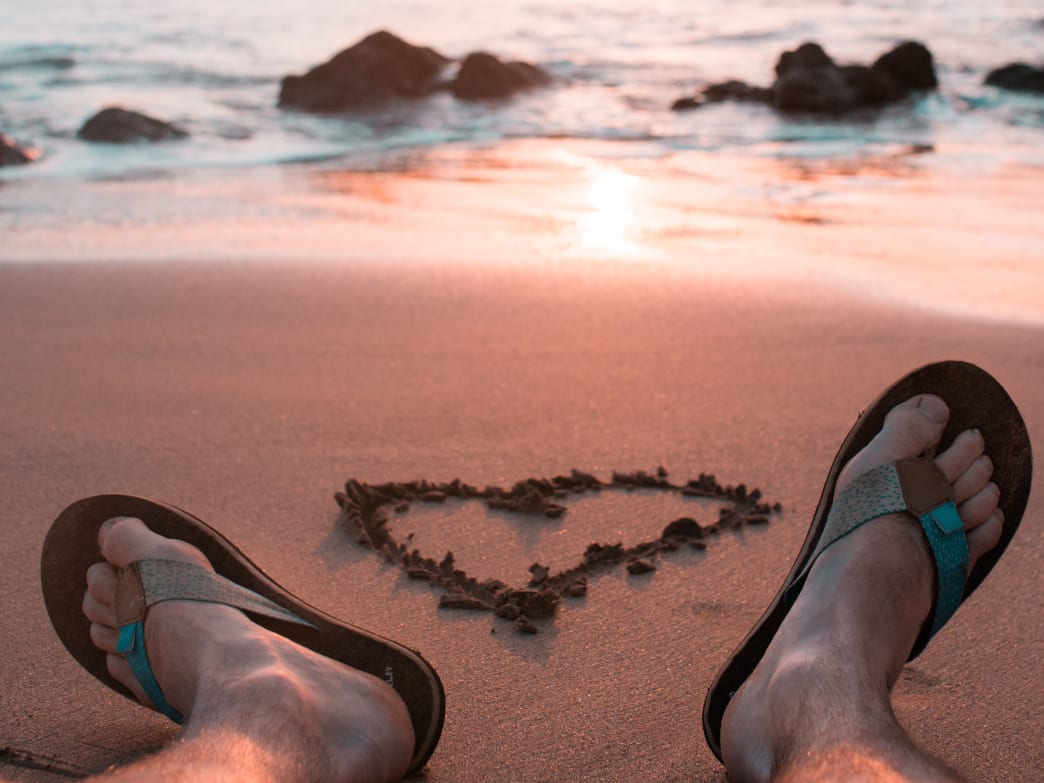
4 Questions to Ask Before Buying Your Next Pair of Sandals
Share
You always remember a good pair of sandals. High-quality sandals that stand the test of time are like an old friend. You come to rely on them to get you through all sorts of situations, especially if you love to travel and explore the outdoors. The best sandals, such as those from Scott Hawaii, are versatile. They provide sure footing on a rocky shore and protect your feet as you traverse hot summer sand. When you’re in town, they cradle and cushion your feet for long walks along boardwalks and city streets.
While people have relied on sandals for thousands of years, they’re not all created equal. Top manufacturers use especially durable materials and advanced designs to ensure that you won’t suffer a blowout. The best sandal companies also craft products that deliver superior support and long-term comfort. To help you identify sandals that will meet your needs for the long haul, we’ve put together four big questions that you should ask before making your next sandal purchase.
1. What are the sandals made of?
Companies use a wide variety of materials to make sandals that serve different needs. Some sandals are suited more for activities on land, while others are best for activities in the water. Some sandals are made to be more stylish, while others focus on function and durability. A well-made sandal that fits properly can last for years if you choose materials that are best suited for your use.
If you don’t plan to wear your sandals in the water, consider a pair made with leather. Because leather is exceptionally durable, these sandals will withstand everyday use, taking you from a day on the beach to a night out with friends. In addition to being durable, leather can also be soft and very comfortable. Sandals made of soft nubuck leather, such as Scott Hawaii’s Nokea, will conform to the contours of your foot for a tailored fit.
To extend the life of leather sandals, you should keep them clean. Rather than soaking them, use a soft, dry cloth or soft bristle brush to remove things like dirt, grime, and salt. Then, apply leather-friendly saddle soap to the insole to help keep the leather soft.
One downside of leather sandals is that they can become slippery when wet. If your feet will be exposed to water, it’s best to choose a waterproof sandal made with neoprene or nylon. Neoprene is a soft material used to make wetsuits. It feels good against wet or dry skin, and it doesn’t become slippery when it’s wet. While neoprene is prone to having an odor, you mitigate odors by rinsing them after every use. For boating and other watersports, another excellent option is sandals with nylon straps and insoles made of synthetic materials. These sandals will hold up well after being soaked and dried repeatedly. Plus, they won’t be slippery or uncomfortable when they’re wet
Sometimes you just need simple sandals for a quick trip to the store or hanging out in places where you can’t go barefoot. For these cases, lightweight rubber sandals are a perfect fit. These basic sandals and aren’t made for demanding conditions, but certain models still offer plenty of comfort. The Moena from Scott Hawaii provides arch support and has an insole made with the same cushioning foam used in yoga mats.
Shop Scott Hawaii sandals now!
2. Do the soles provide traction?
High-quality sandals are not only built to feel good but also keep you safe. If they lack adequate traction, you could slip and fall and possibly get injured. That’s especially true when you’re traversing wet surfaces. When you’re shopping for sandals, inspect the sole to see if it’s textured to prevent slipping. Some manufacturers not only texturize the soles but also include grooves or channels that direct water away from the bottom of the sandal.
Also, consider the design of the insole. A textured insole gives you an added level of grip that comes in handy when you’re trying to walk or stand on a wet boat deck.
3. Are the straps sturdy?
If you’ve ever experienced the dreaded flip flop blowout, you know the importance of sturdy sandal straps. When a strap pops out the top of the sandal, your footwear is practically useless. Often, it’s very difficult or impossible to repair them when you’re in a remote replace with few resources. And when you get back to civilization, chances are you’ll have to buy a replacement pair.
A quick inspection of the sandal strap will tell you all you need to know. Does it feel flimsy when you pull on it? Is the strap material extremely lightweight? If so, there is a good chance your pair will break and not last long. For rubber sandals with a rubber strap, make sure the size of the plug on the sole is thick enough so that it won’t bust through the top of the sandal easily.
Learn more about Scott Hawaii’s quality guarantee and one-year warranty.
4. Do they provide support and cushioning?
The best way to determine whether sandals are comfortable is to give them a test drive. Try on a few different sandals and walk around a bit to see which ones fit best and offer the performance features you need. Many manufacturers offer sandals in whole sizes. If you typically wear shoes in a half size—say 8.5 or 10.5—you should probably go with sandals that are a half size larger. Your heel and toes should rest entirely on the footbed to keep you stable and comfortable.
Sole thickness, arch support, and the heel cup are directly related to comfort. Sandals with a thick sole and arch support will reduce foot fatigue. Plus, they’ll promote good posture and reduce stress throughout your body. Also, pay attention to the heel area of the sandals. If you plan to be more active, choose a model with a heel cup. It will cradle the back of your foot to provide stability and prevent pain in your heels. If you consider these design features and find comfortable, supportive sandals, they’ll serve you well for many years.
Written by Hap Pruitt for Matcha in partnership with Scott Hawaii.
